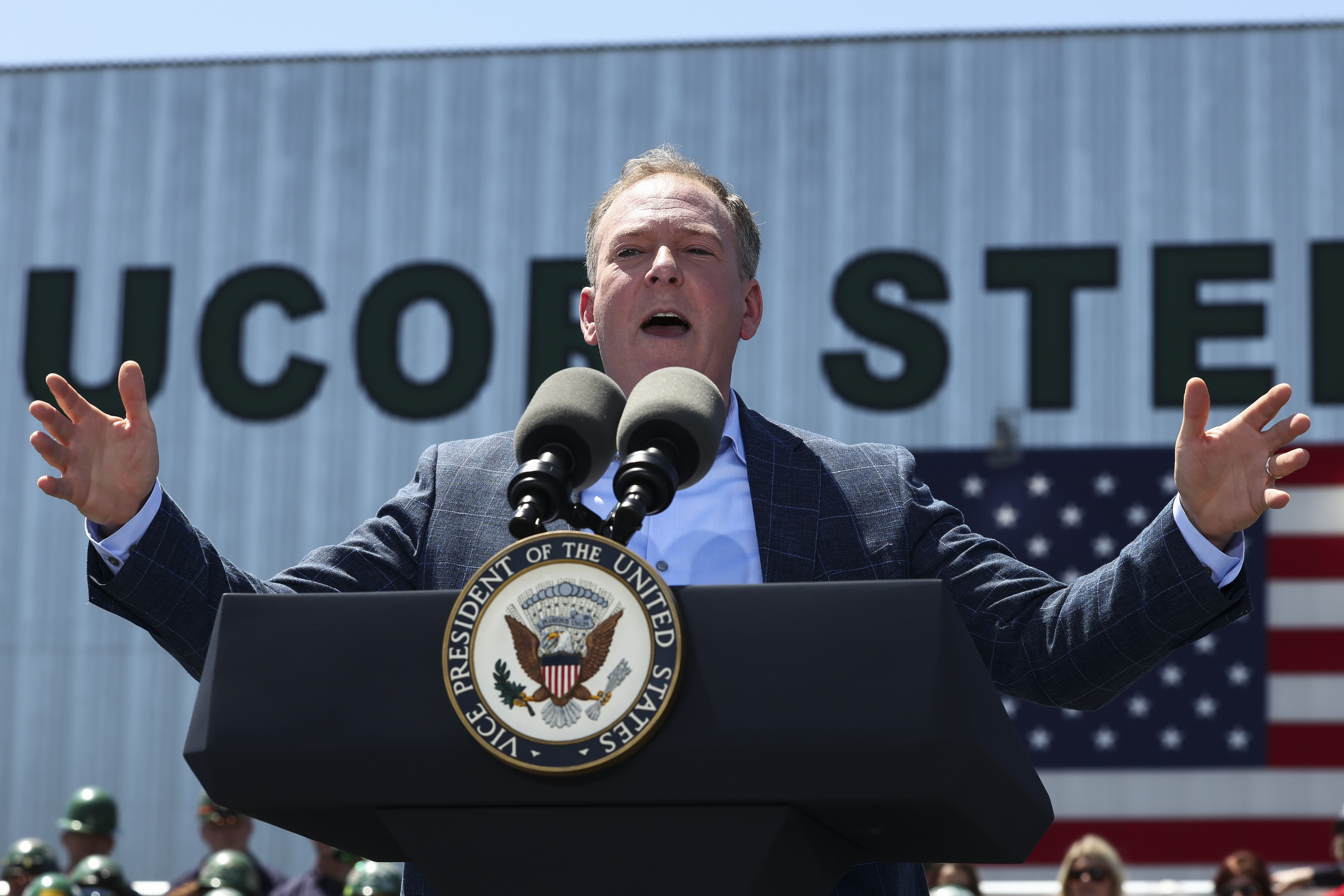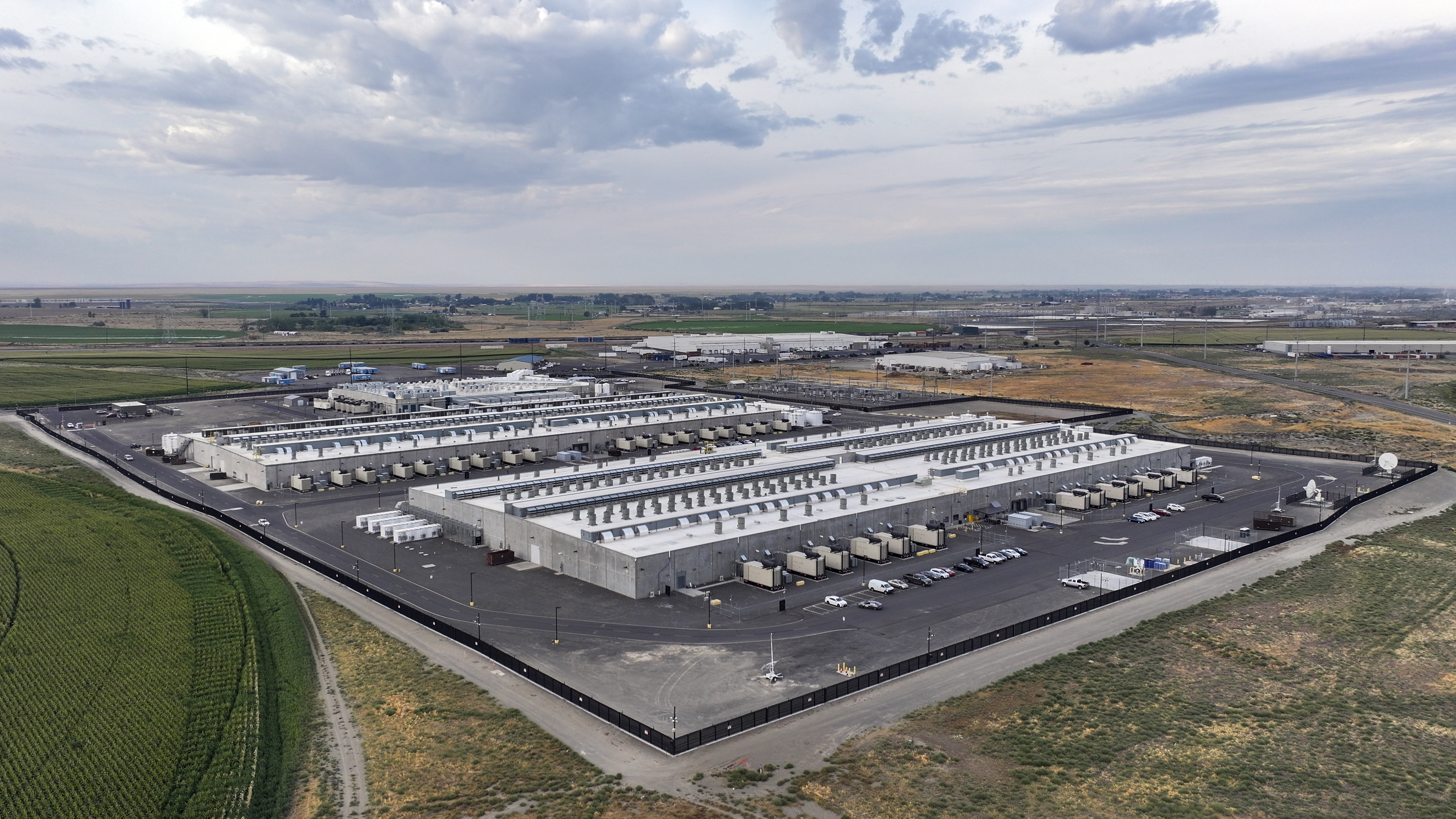Plans by the Trump administration to scrap a landmark climate rule threaten to increase carbon pollution by making it easier to build natural gas power plants and sustain some coal facilities.
Analysts said the demise of the EPA regulation for existing coal and new gas power plants, finalized last year, would not bring the green energy transition to a screeching halt. But by extending the lives of some coal-fired power plants and removing emissions requirements for new gas plants, President Donald Trump’s rollbacks could add to U.S. climate pollution and push the world closer to what scientists say are dangerous levels of warming.
“Rescinding the greenhouse gas rule is likely to significantly increase CO2 emissions by shifting generation away from gas and renewables, while increasing generation from existing coal units,” said Martin Ross, director of electricity modeling at Duke University’s Nicholas Institute for Energy, Environment & Sustainability.
Trump has been here before.
EPA discarded former President Barack Obama’s planned emissions standards on power plants during Trump’s first term. But carbon dioxide levels from power plants continued to fall, as the combination of cheap natural gas and renewables pushed a wave of coal plants into retirement. U.S. power sector emissions have fallen by roughly a quarter over the past decade, according to EPA data.
The difference this time is that demand for electricity is skyrocketing, fueled by the technology industry’s race to build data centers for artificial intelligence. Tech companies have traditionally been large buyers of renewable energy, but they have begun looking to natural gas to meet their power needs. Orders for new gas turbines are surging.
The country’s emissions trajectory will hinge in large part on where Big Tech finds its power, analysts said. Wind, solar and batteries remain among the cheapest sources of electricity, but their future has been complicated by Trump’s trade war and his pledge to end clean energy subsidies.
“Tech companies all have clean energy goals, but the economic imperative for them is to get their AI stuff online as fast as they can,” said Arne Olson, an emissions modeler at Energy and Environmental Economics, Inc. “It’s existential for them.”
If the country can’t build energy sources fast enough to keep up with demand, it will likely turn to existing power plants that seldom run today. They are mostly coal plants and older, inefficient natural gas facilities, Olson said.
“If we can’t rebuild fast enough, then we’re going to see increased emissions,” he said. “The evidence seems to point to can’t-build-fast-enough, so quite likely emissions are going to go up in the near term.”
Lifeline for coal
The White House regulatory office is currently reviewing EPA’s proposed repeal of the Biden-era carbon rule. EPA is also expected to propose a revision soon to a key scientific finding — the endangerment finding — that could take Clean Air Act regulations for greenhouse gases off the table entirely.
EPA Administrator Lee Zeldin has promised that the Trump deregulatory agenda will support “all forms of energy, including clean beautiful coal.” The agency’s rules would have required coal plants operating past 2038 to install carbon capture and sequestration by 2032, a provision that some industry observers predicted would force the country’s remaining coal units into retirement.
“The CCS requirement for existing coal is sort of the final nail in the coffin for coal,” said Ross of Duke University.
Now that requirement is gone.

Coal generation was up 20 percent through the first three months of 2025, according to the U.S. Energy Information Administration, thanks to a colder winter, higher natural gas prices and robust power demand.
Mining companies praised the EPA rollback, saying it would help the coal industry supply the country’s growing power needs.
“We continue to see substantial U.S. coal demand many years into the future,” Peabody Energy CEO Jim Grech told financial analysts Tuesday.
Even without the regulations, EIA thinks coal will play a smaller role in America’s future power mix. The U.S. had just under 170 gigawatts of coal-fired power capacity last year, according to EIA’s 2025 Annual Energy Outlook.
In a world in which the power plant carbon rule remained in effect, coal would all but exit the grid by 2032, when the rule’s strictest standards based on carbon capture would take effect. Without the rule, a diminished set of coal-based units is expected to linger on the grid almost indefinitely, declining from about 80 GW in 2032 to just below 60 GW in 2050, according to EIA.
Coal’s market woes are underscored by the recent closure of the Cholla coal plant in Arizona. Trump called for keeping Cholla open last month. But the company that operates the plant, Pinnacle West, told investors last week it had no plans to bring Cholla back online, noting it was uneconomical.
“I think we had kind of kissed coal resources goodbye economically, and I suspect that that trend will continue,” said Allison Clements, a Democrat who served on the Federal Energy Regulatory Commission.
Gas boom?
The situation with gas is more complicated. EPA’s rule would have required gas plants that began construction after May 2023 to install CCS by 2035 or run at less than 40 percent of their capacity. The agency projected that most utilities would choose the latter.
EIA anticipates that rescinding the power plant rule could have a modest effect on the amount of gas that’s added to the grid. It expects that an additional 8GW of gas will be built in 2032, a rounding error compared with the 248 GW of combined-cycle gas it estimates will be available nationwide that year.
But there are signs that a gas boom is building.
Siemens Energy, one of the world’s largest gas turbine makers, said Thursday that it had set a new quarterly record for turbine orders in the first three months of the year. The announcement followed similar news from GE Vernova, which has reported surging turbine orders in recent months.
GE Vernova is building a gas plant with carbon capture in the United Kingdom, but it does not expect similar facilities to be built in the U.S. in the near term, the company’s chief executive, Scott Strazik, told investors in December.
“In the U.S., this is going to happen more in chapters,” he said. “Build now, this decade unabated. Think through adding the carbon capture in the next decade when it makes sense.”
How much gas actually makes it onto the grid is unclear. The backlog for getting a new turbine is several years long. Developers also face siting challenges for new pipelines and power plants.
And while large data centers have begun looking to fossil resources for power, most still prefer carbon-free generation, Clements said.
“This new load growth has caused bumps in that road,” she said. “But I don’t think overall the market trends change. Customers, big customers, hyperscalers, continue to want the cleaner fuel, cost-free resources that they can get access to.”

Todd Snitchler, president and CEO of the Electric Power Supply Association, welcomed the Trump administration’s decision to rollback the regulations, saying they threatened to hamstring gas resources at a time when they are needed to meet growing power needs.
But he said power companies need regulatory certainty after a decade of watching Democratic and Republican administrations punting the EPA’s rules back and forth. He expressed hope that Congress would establish a new standard for power plant emissions that recognizes the need to cut carbon dioxide while preserving reliability and affordability.
“It’s become very clear in an era of load growth that a focus on longer term investment horizons than two- or four-year election cycles is crucial,” Snitchler said. “Congressional action that codifies some of those policy choices is the level of certainty that I think will help move industry or move investors off the sidelines at a quicker pace.”
The effect of EPA’s rollback will be bigger on renewable energy. EIA projects that in 2039 — the year by which coal-fired power plants without CCS would have retired — gas capacity would be 1.4 GW lower without the rule than with it. But removing the rule is expected to result in 108 GW less renewable power capacity in the same year.
Ben King, an analyst at the Rhodium Group, said that while gas will lose a little of its competitive advantage with coal if the rule is repealed, its position relative to renewables will improve.
“It makes natural gas a little more economic because you don’t have to run these plants that you’re building at a lower capacity factor, and that helps them out-compete wind and solar a little bit more,” he said. “And particularly since you’ve got this coal capacity that’s not going away, it helps gas fill in more behind that coal capacity than wind and solar.”
Even with no rule, renewables are still projected to reach 1,073 GW in 2039, up from 368 GW in 2024. And virtually no one is projecting that dismantling the climate rule would revive investor interest in building new coal-fired power plants.
But King said that if Republicans roll back Inflation Reduction Act credits for wind, solar and battery technologies as part of this year’s budget package, that could have a larger effect on the grid than EPA’s regulatory repeal.
“If those aren’t in place, there’s still lots of opportunity for them to compete economically, but that opportunity is meaningfully reduced,” he said of the IRA credits.
The overall effect of Trump’s repeal of the climate rule would lead to more coal, about the same amount of gas and less renewable power.
And that means higher emissions.
EIA estimated that repealing the rule would increase power sector emissions by 48 percent in 2040.
